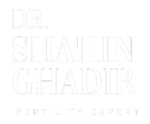Medical Fertility Treatments
Medical Fertility Treatments
Due to modern advancements, our specialists are able to offer a wide range of fertility treatment options. Some of the treatments we offer can be more straightforward and cost-efficient, while other treatment options can be more elaborate and higher in costs. Our team of specialists will explain every treatment option available, and then will work with you to develop a treatment plan customized to your exact diagnosis and financial circumstance.
According to the American Society for Reproductive Medicine (ASRM) reported that 80 to 90 percent of infertility cases, in the U.S., can be treated with traditional therapies such as surgical or medical treatment, rather than IVF or assisted reproductive technology (ART).
This means that there are a variety of treatment options available, medical and surgical, and that determining a treatment plan can be based on your diagnosis and personal circumstances.
Your fertility specialist will provide more in-depth explanations, but here is an introductory overview of the medical and surgical fertility treatments available:
Medical Treatment Options:
Medical treatments are usually the most appropriate initial option for couples struggling with infertility. Our specialists will perform a complete evaluation of both partners’ medical history to help determine which treatment plan is most likely to result in a healthy pregnancy.
These are some of the most common conditions and treatments that your fertility specialist will discuss during your evaluation:
- Treatment of Ovulatory Disorders
- Inducing Ovulation – Utilizing Clomid, Letrozole, or Gonadotropins
- Cycle Monitoring and Stimulation
- Ultrasound Tracking of Ovulation
- Intrauterine Insemination (IUI)
- Sperm Preparation/Gender Enhancement for IUI
- Donor Insemination
Treatment of Ovulatory Disorders
The most common cause of infertility in women is ovulatory disorders, which can be classified by their underlying cause.
Class I Ovulatory Disorders
Class I ovulatory disorders are caused by low levels of pituitary hormones and estrogen. Women with class I ovulatory disorders generally respond well to hormone injections.
Class II Ovulatory Disorders
In class II ovulatory disorders, pituitary hormones and estrogen are at a normal level, but ovulation fails to occur.
Class II ovulatory disorders include women struggling with polycystic ovary syndrome (PCOS). Patients with PCOS are typically good candidates for ovarian stimulation by letrozole (LTZ) or clomiphene citrate (Clomid). However, if conception does not occur after three or four ovulatory cycles, specialists may suggest proceeding with a more aggressive treatment option such as IVF.
Class III Ovulatory Disorders
Class III ovulatory disorders are caused by high levels of pituitary hormones, which is due to declining ovarian reserve (aging). Class III disorders typically occur in perimenopausal women and those with premature ovarian insufficiency. Unfortunately, patients with class III disorders have the lowest likelihood of conception using their own eggs. Egg donation may be suggested as a treatment.
Class IV Ovulatory Disorders
Class IV ovulatory disorders are caused by high levels of prolactin (the milk secretion hormone) and low levels of estrogen and pituitary hormones. Patients with class IV disorders generally respond well to medication that reduce prolactin secretion.
Inducing Ovulation
Letrozole, Clomid (clomiphene citrate), and gonadotropins are the most commonly used ovulation inducing agents.
Letrozole and Clomid are ovulation inducing pills that are taken orally. Both Letrozole and Clomid work by stimulating the brain to produce higher levels of hormones, which then stimulates the ovaries to create and ovulate oocytes (eggs). Patients using this treatment method will take pills for five days, beginning on day 3 to 5 of the menstrual cycle. When prescribed and used appropriately, approximately 70 percent experience ovulation, success rates of conceiving vary depending on age range and underlying diagnosis. It is suggested that patients undergo no more than three failed cycles, but rather proceed with an alternative agent.
Gonadotropins are injectable medications that work to mimic the secretions of pituitary hormones. During the use of gonadotropins, specialists will closely monitor the ovarian response in order to determine the level of stimulation, the progression of the developing follicles, and an optimal time to begin ovulatory stimulation. Gonadotropins can be used in combination with intrauterine insemination (IUI) or during IVF.
Cycle Monitoring and Stimulation
Monitoring the stimulation of ovaries is the core of all assisted reproduction procedures. During this process, specialists will closely monitor the progress with the use of blood tests and ultrasounds. Monitoring blood hormone levels and the progress of the ovarian follicles is done to track responses to medical treatment and to help pinpoint when ovulation will most likely occur. During the second half of the cycle, progesterone is often supplemented to maintain normal hormone levels and to ensure proper preparation of the uterus for a fertilized egg to implant.
Ultrasound Tracking of Ovulation
Ultrasound testing allows doctors to closely track ovulation, in a very safe and highly reliable method. During specific stages in the ovulation cycle, a vaginal ultrasound will be performed. This provides doctors with an accurate count and progression of the developing follicles and eggs, allowing for very precise timing for insemination to ensure the greatest chance of success. The ultrasound is performed by inserting a small transducer into the vagina, which causes very little to no discomfort.
Intrauterine Insemination (IUI)
Intrauterine Insemination is most commonly suggested in cases where pregnancy attempts have been unsuccessful for at least one year, after ruling out other causes of infertility. During IUI procedures, the semen specimen is washed of any seminal plasma, concentrated, and can then be directly injected into the uterus through a small catheter placed through the cervix. This optimizes chances of conceiving by placing a high concentration of sperm in the right place, at the right time (during ovulation).
